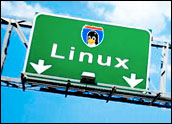
Sun Microsystems on Thursday announced that the Java Platform, Enterprise Edition (Java EE) 5 specification has been approved by the Java Community Process (JCP) Java EE/SE Executive Committee.
Java EE is a platform for Java and Web services deployment. It has 30 licensees and includes innovations provided by more than 30 community experts. The latest version is a major revamp to the programming model that focuses on support for Web services and service-oriented architecture (SOA) technologies, as well as simplified Web application creation.
“Java EE 5 accelerates and radically simplifies enterprise Java development by removing boilerplate code, relying upon reasonable defaults whenever possible, and providing a broader set of commonly used utility classes,” said Bill Shannon, distinguished engineer and JSR 244 Spec Lead, Sun Microsystems. “The new ease-of-development features in Java EE 5 are designed to allow developers to get more accomplished in less time and to reduce the complexity of the code they produce.”
A Much Cleaner Approach
Java EE 5 is the most significant update of the programming model to the Enterprise Java development platform since the launch of J2EE 1.2 in December 1999, according to the company. BEA, JBoss, IBM, Oracle, and SAP were among the first licensees to announce endorsements for the new edition of the Java EE platform.
Among the specific new features in Java EE 5 is Enterprise Java Beans (EJB) 3.0, which is designed to simplify the programming model by supporting Plain Old Java Objects that can be converted to Web services with Annotations or made persistent using the Java Persistence API.
The Java Persistence API is a new, high-level persistence interface, jointly developed by Sun and Oracle. Sun calls it a “much cleaner approach” to mapping Java objects to relational databases.
Updated Web Services
Updated Web services, including JAX-WS 2.0 and JAXB 2.0, are also a part of Java EE 5. These updated Web services support the latest W3C and WS-I standards, such as SOAP 1.2, WSDL 1.1, and protocol and transport independence, as well as the REST style of Web services.
Meanwhile, JavaServer Faces 1.2 facilitates building Web 2.0 applications with AJAX (Asynchronous Javascript Technology and XML) and reduces the complexity of constructing user interfaces for Web-based applications by providing prepackaged components that developers can call on from applications, significantly reducing new code development, according to Sun.
Finally, Java EE 5 includes extensive support for Annotations, aiming to eliminate the need for deployment descriptors in most cases and make it easier to deal with persistence, Web services, transactions, security and all the other powerful capabilities of Java EE, according to Sun.
SOA on the Way
The Web services and SOA focus is key to the future of development. SOA is about much more than development of software — it’s a broad approach to thinking about how IT capabilities can be published, combined and used in a really flexible way, Neil Ward-Dutton, an analyst at MW Advisors, explained.
“The fact that most people right now are pursuing open standard protocols for SOA means that open source technology creators have a more level playing field with commercial creators than they might in other areas,” Ward-Dutton told LinuxInsider.
“If you look at what’s possible in PHP, for example, it’s been pretty easy for that community to build support for various Web services technologies into PHP libraries as the protocols are open and widely published and understood.”
It’s too early to say whether open source tools will dominate the SOA front. There are, however, tools from JBoss, Beehive and others that are gaining SOA traction. Sun’s focus could help the new Java spec gain broader adoption as the Web services trend continues to gain momentum.




















































